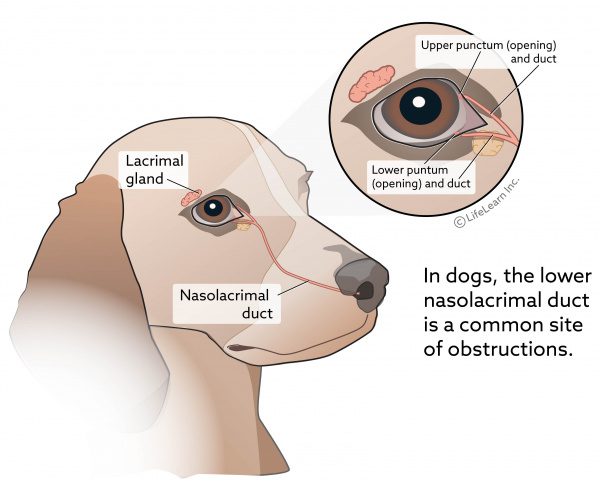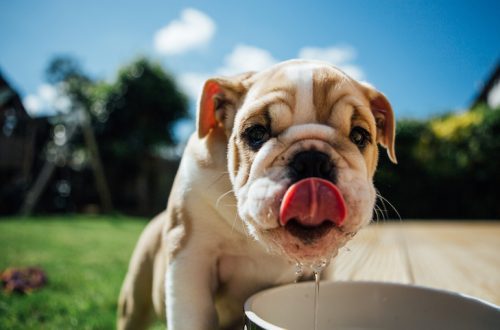
Why do dogs have watery eyes?
The lacrimal glands perform important functions: they protect the cornea from drying out and harmful microorganisms, supply it with nutrients, contribute to the correct refraction of light, and wash away foreign particles that have fallen on the surface of the eye. But sometimes the normal functioning of these glands is disturbed, and moisture becomes excessive. In such cases, it is important to quickly find out the cause and eliminate it.
Signs of excessive lacrimation
The problem is easy to detect visually: wet stains are constantly visible on the animal’s coat around the eyes. In most cases, the pet experiences discomfort. The eyes itch, the dog rubs them with its paws or rubs against objects in the house. Often, in addition to tears, yellow-green or brown discharge is noticeable. In many conditions that provoke lacrimation, the pet squints its eye. Another symptom may be redness of the eyelids. In advanced cases, the dog does not eat and is in a depressed apathetic state.
Common causes
There are three groups of problems in which the dog’s eyes are “wet”.
Profuse lacrimation as a reaction to any irritant
Improperly growing eyelashes, some of which are directed inward and injure the cornea.
Turn of the century. With this pathology, part of the skin surface of the eyelid, covered with hair, faces the eye.
Allergic reaction.
Foreign body in the conjunctival sac or behind the third eyelid.
Mechanical damage to the cornea: scratches and abrasions. As a rule, with this and the previous problem, one eye is watery.
Blepharitis. Inflammation of the eyelids, which causes thickening of their edges and severe itching.
Keratitis. Inflammation of the cornea, sometimes accompanied by erosions.
Lacrimal fluid is secreted in the required quantities, but is not discharged through the nasolacrimal canal
Normally, after the cornea is moistened, the liquid drains through special openings (lacrimal puncta) into the lacrimal canal, then entering the nose and oral cavity. However, this may be hindered by:
– atresia (reduction in diameter), blockage or infection of the lacrimal openings;
– Narrowing, blockage or adhesions of the lacrimal canal.
As a result, the lacrimal fluid stagnates, which leads to dacryocystitis – inflammation of the lacrimal sac.
Malfunctions of the gland
Hypersecretion of the lacrimal gland, in which too much fluid is secreted, and the discharge system does not have time to remove it in full. It is of unknown origin and is rare.
Conjunctivitis falls into two categories at once, in which there is both irritation of the cornea and blockage of the lacrimal canal with discharge, for example, pus. This problem is one of the most common causes of watery eyes, and it is worth learning more about it.
What should I do if my dog has watery eyes?
As you can see from the previous section, watery eyes can be a symptom of many diverse diseases and pathological conditions. Only a qualified veterinarian can determine the cause and prescribe effective treatment. In no case do not try to self-medicate – this way you can only lose precious time and risk exacerbating the situation.
Try to get to the doctor as soon as possible. If you managed to sign up for the near future, it is better not to remove the discharge: this will distort the clinical picture and make it difficult to make a diagnosis. If the appointment is scheduled for another day, and the eye does not open due to frozen pus, you can rinse it with warm boiled water. Moisten a clean washcloth or cotton pad and gently wipe from the outer edge of the eye to the nose. It is especially delicate to act when the eye is swollen: most likely, touching it will be painful.
Washing with saline (sodium chloride, 0,9%) is also safe. But what you definitely shouldn’t wash your eyes with is tea or a decoction of herbs. The microparticles of plants contained in them will increase irritation, and the harm from such a procedure will be more than good.





